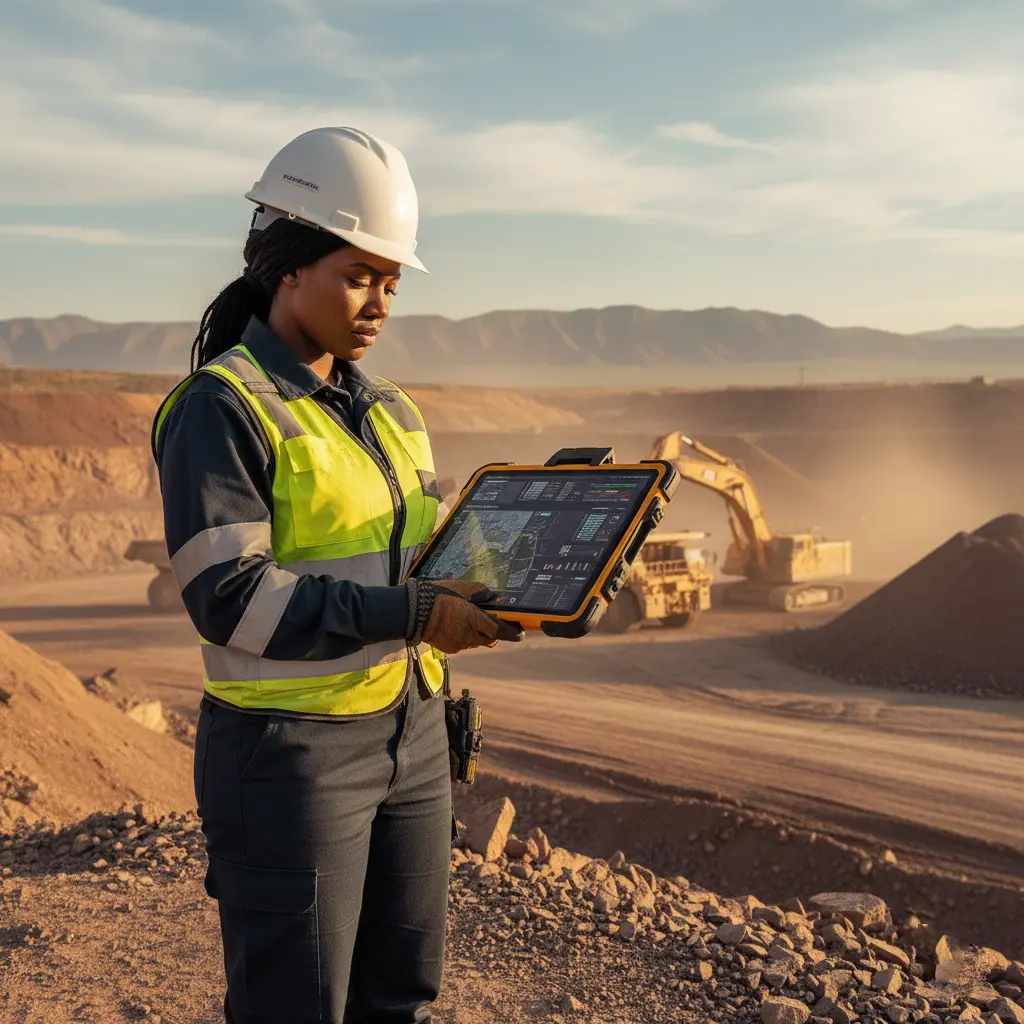
“The mining industry doesn’t just dig deep for resources; it must also dig deep for responsibility.” — International Council on Mining and Metals (ICMM)
Mining is the engine that powers modern civilization. But beneath the surface of this progress lies a simple truth: no resource is more valuable than human life.
According to the International Labour Organization (ILO), mining accounts for only 1% of the global workforce, yet contributes to 8% of fatal workplace accidents. That’s not just a statistics, it’s a call to action.
Every miner, engineer, and technician deserves to return home safely. Achieving that requires a culture of safety that lives and breathes at every level of the operation.
When organizations invest in safety, the payoff extends far beyond lower incident rates. It creates an environment where people feel valued, confident, and capable.
As Dr. Michael Quinlan, an occupational safety expert, once said:
“Safety is not a box to be ticked — it’s a behavior to be lived.”
Today’s mining operations are a fusion of technology, environment, and human skill. This evolution introduces new kinds of risks — and new opportunities for prevention.
- Automation and AI: While smart equipment reduces human exposure to hazards, it also requires new skills and safety protocols around robotics and data systems.
- Air Quality and Dust: Silica and diesel particulates continue to threaten miners’ respiratory health. According to the World Health Organization (WHO), prolonged exposure to silica dust can lead to incurable diseases like silicosis.
- Psychological Safety: Remote work sites and long rosters can fuel fatigue, stress, and isolation. The Minerals Council of Australia found that psychological injuries now account for over 10% of all mining-related compensation claims.
- Climate Challenges: Rising temperatures, water scarcity, and extreme weather affect both worker safety and equipment reliability.
The Five Pillars of a Safe Mining Culture
1. Leadership Commitment
Safety starts at the top. When executives and supervisors model safety-first behavior, they send a clear message: production never outweighs protection.
“If you think safety is expensive, try having an accident.” — Trevor Kletz, Chemical Safety Pioneer
2. Empowered Employees
Frontline workers often see risks first. Empowering them with “Stop Work Authority” — and truly respecting their right to use it — transforms safety from a policy into a practice.
3. Continuous Training
Regular, scenario-based training reinforces safe habits and sharpens decision-making. Virtual reality (VR) and simulation-based learning are now proving highly effective in preparing miners for real-world emergencies.
4. Technology as a Shield
Smart helmets, biometric sensors, and drone inspections are revolutionizing site safety. Predictive analytics can even flag risk zones before an incident occurs. According to Deloitte’s 2024 Mining Safety Report, mines that adopt real-time data monitoring reduce incidents by up to 35%.
5. Learning Without Blame
The best safety systems are built on transparency. Treating near-misses as learning opportunities — not disciplinary actions — builds trust and continuous improvement.
The Human Side of Safety
Every miner is someone’s family. Behind every helmet is a story — a child waiting for a parent to come home, a partner checking the phone for a message, a community depending on one more safe shift.
Safety isn’t just about compliance forms or dashboards — it’s about human dignity.
“When safety becomes a habit, accidents become history.” — Unknown
In the digital age, HR technology plays a vital role in embedding safety into mining culture.
- Digital Learning Platforms: Deliver continuous microlearning modules to reinforce critical safety behaviors.
- Analytics Dashboards: Monitor fatigue, shifts, and absenteeism to predict burnout and accident likelihood.
- Incident Management Systems: Use AI-driven analytics to identify root causes and prevent recurrence.
- Wellbeing Programs: Integrate physical and mental health initiatives into HR frameworks to address the whole worker, not just the job function.
When HR, technology, and operations align, safety stops being reactive — it becomes predictive and proactive.
Final Thoughts
The world will always need the minerals mined from beneath our feet. But the mining industry must continue to prove that it values people above production.
The future of mining lies in innovation, inclusion, and integrity — and at the core of that is health and safety.
“The goal isn’t zero harm — it’s zero complacency.”
Because true safety isn’t about perfection. It’s about commitment, courage, and care — shift after shift, site after site.